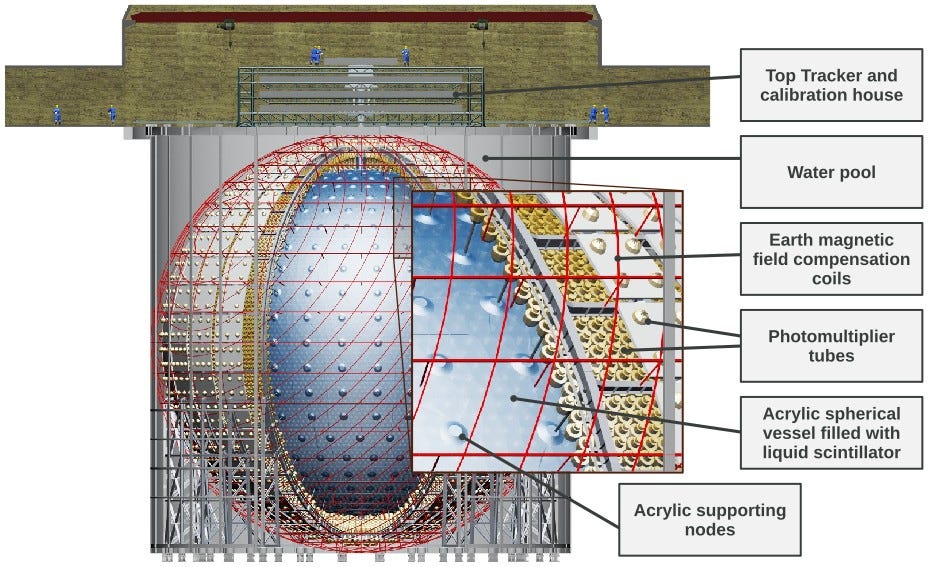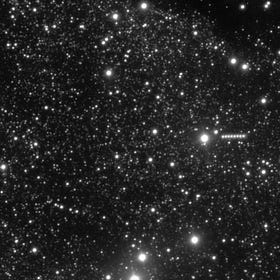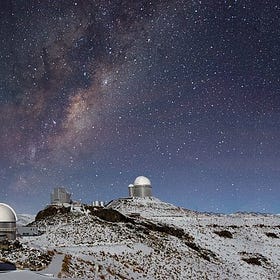The Week in Space and Physics: Revisiting the Wow! Signal
On messages from aliens, what an asteroid impact on the Moon might look like, the opening of a new neutrino observatory, and the tenth flight of Starship.
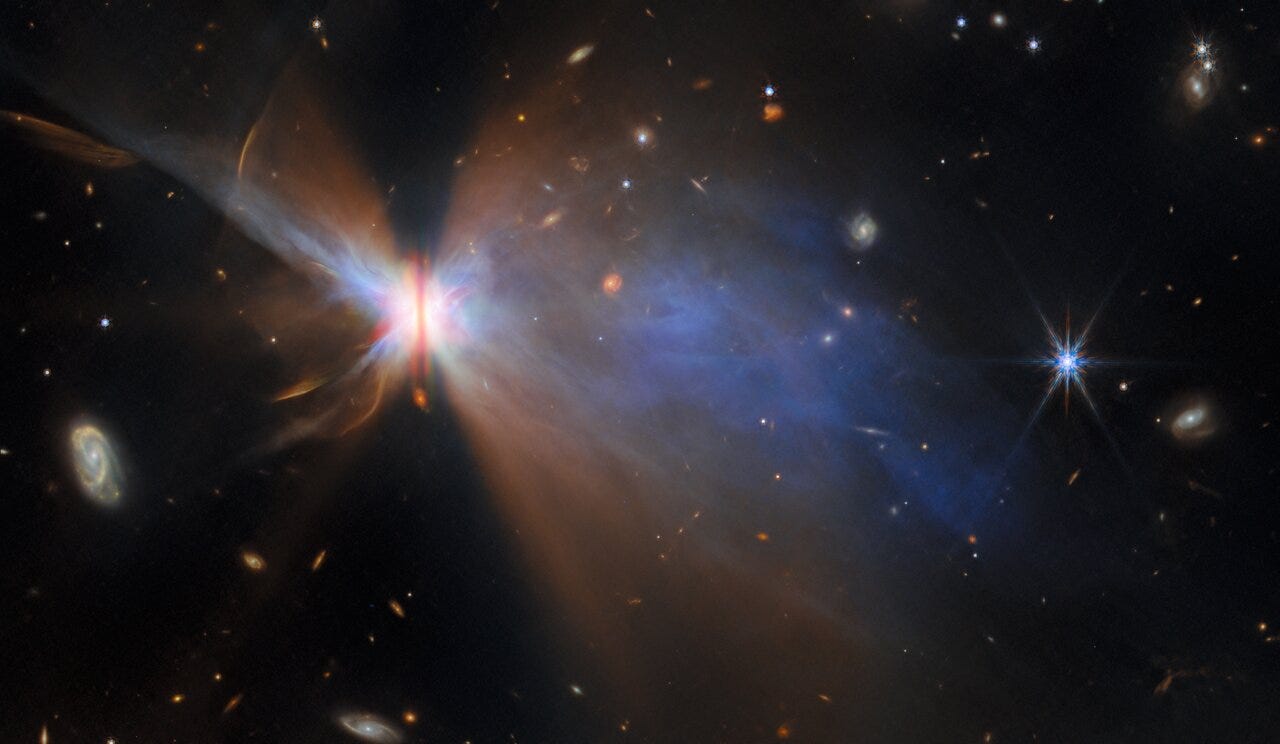
Was it aliens?
On August 15, 1977, “Big Ear”, a radio antenna operated by Ohio State University, picked up a signal coming from deep space. That was, after all, the intention of the project. Big Ear was built to listen for messages sent by aliens, and by 1977 it had been doing so for close to half a decade.
Yet, until the night of August 15th, that search had come up empty-handed. Perhaps that was no surprise – the universe is a big place, and an antenna can only scan so much of it. There are, too, countless possible frequencies upon which a message might arrive; though to solve this particular problem, Big Ear’s operators had decided to focus on one specific frequency.
That was 1420 MHz, a frequency of energy emitted naturally by hydrogen atoms, and presumed to be so fundamental that any intelligent civilization would be aware of it. Such a civilization, they reasoned, might seek to signal its presence by emitting a powerful pulse of energy close to this frequency. A radio receiver could spot that signal, and to Big Ear it would look like a burst of energy rising and falling over seventy-two seconds, precisely the time it took for the rotation of the Earth to sweep the antenna over the point of transmission.
What the message might contain was guesswork. Perhaps aliens would transmit the digits of pi in some ingenious way, or send pulses encoding the prime numbers. After all, if you are going to beam a message across the galaxy, you’d want to make sure you distinguished yourself from signals of the natural kind.
And that, in the end, was the problem. The signal of August 1977 was exactly the kind of thing Big Ear’s operators had been looking for. It was strong, it covered a narrow band of frequencies, and it rose and fell over those seventy-two seconds. After seeing a printout of the signal, the astronomer Jerry Ehman scrawled the word “Wow!” across the page – earning it the nickname “The Wow! Signal”.
But it was never seen again. Telescopes have examined the spot it came from dozens of times, and found no signals of any kind, nor even any real candidates from where it might have come. While it probably did arrive from deep space – a recent paper ruled out the possibility of a stray satellite or some terrestrial interference – there is no clear sign it was artificial.
Indeed, the signal appeared as a simple burst of energy, and contained no information that Big Ear could capture. That means natural causes are a possible explanation, and there are rare but plausible phenomena that might have created it. Indeed, the most likely explanation is that we happened to pick up a burst of energy coming from a cloud of hydrogen.
If something powerful – a magnetar flare, say – had happened to shine upon that cloud, it could have released a radio wave just like that seen in 1977. And that explanation, sadly, is enough to kill the idea that we picked up an alien radio signal four and a half decades ago.
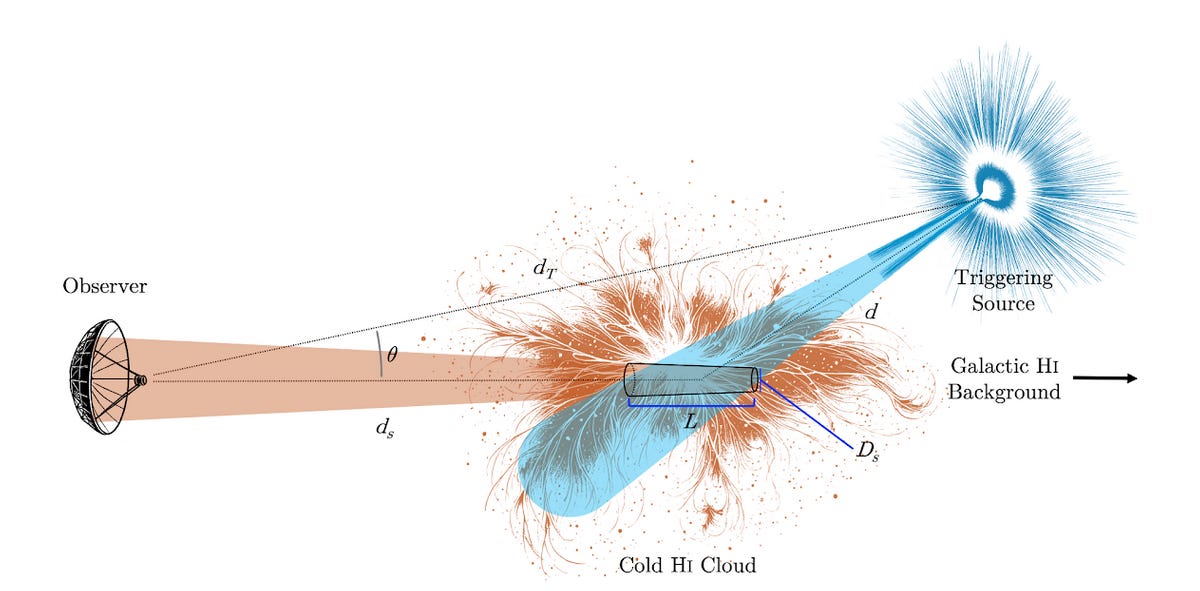
What If an Asteroid Hits The Moon?
When the asteroid 2024 YR4 was first discovered, astronomers calculated there was a small risk it would strike the Earth in 2032. Fortunately, more detailed observations have refined that risk, and we are now pretty confident it won’t hit our planet in the near future. However, a small but intriguing chance does remain that the asteroid will instead smash into the Moon.
The odds of this happening are still low – NASA puts them about one in twenty-five – yet they are high enough for astronomers to start thinking about what we might see if it does. The impact would be comparable to the detonation of a large atomic bomb, they say. Indeed, had it struck a city on Earth, then that city would certainly have been devastated by the encounter.
Instead, an impact on the Moon would simply blast out a large crater. That would be accompanied by a bright flash of light, one that would shine more brightly than the full moon. Since the path of the asteroid would take it into a band of terrain stretching across the southern hemisphere of the face turned towards Earth, there is a good chance we on Earth would be able to see that flash.
But the impact would then throw up a hundred million tons of rock. Most of that would quickly fall back to the lunar surface. But calculations suggest some of it would escape the Moon’s gravity and instead fall towards the Earth. Exactly how much might reach our planet depends on the precise nature of the impact. But it could, researchers say, amount to as much as ten thousand tons of debris.
Fortunately, most of this would come in the form of small fragments, and so burn up in the atmosphere. That, surely, would be a meteor shower to outclass all others. This rain of rocks, a team led by astronomer Paul Wiegert has estimated, could be equivalent to ten years of meteor impacts falling in just a few days. Fortunately – aside from any satellite unfortunate enough to find itself struck by the debris – the event would be dramatic but mostly harmless.
But if it does happen, make sure to appreciate it. On average, Wiegert says, such impacts happen only once every five millennia or so.
China’s JUNO Observatory Opens
Last week, China announced the opening of JUNO, one of the world’s most advanced neutrino detectors. The observatory, buried seven hundred metres under a mountain near the city of Jiangmen, is designed to probe some of the strangest secrets of these elusive subatomic particles.
Although neutrinos are literally everywhere – untold trillions of them are passing through you at this very moment – they remain poorly understood. That’s partly because they are hard to detect. Neutrinos rarely interact with the atoms that make up our world, and thus sophisticated detectors like JUNO are needed to spot them at all.
At the heart of this new detector is a vast sphere containing twenty thousand tons of a fluid known as “liquid scintillator”. Whenever a neutrino hits a proton inside this sphere, it will create a flash of light. Arrayed around the sphere are thousands of instruments designed to precisely detect these flashes, and so to trace the properties of the neutrino responsible.
One property of special interest relates to the “flavour” of the neutrinos seen. Somehow, and for reasons that are poorly understood, neutrinos switch, or oscillate, between these flavours, changing from one to another and then back again. For reasons too complex to get into now1, this implies that neutrinos must have some mass. Yet no experiment has ever been able to measure this mass, or even prove that it really exists at all.
Indeed, we don’t even know which of the possible neutrino states is heaviest, and which is lightest. It is this puzzle that JUNO hopes to solve first, a project that alone will take it several years to complete.
Starship Test Flight Number Ten
Starship’s tenth test flight was widely hailed as a comeback for the troubled project. For the first time in almost a year the spacecraft made it from liftoff to splashdown in one piece, and largely accomplished the goals set for it before launch.
And, indeed, this was the most successful flight of SpaceX’s unfortunately nicknamed “V2” Starship. Each of the three previous flights of this iteration ended in failure, whether because they exploded high above the Caribbean, or because they lost control as they flew a suborbital arc over the continent of Africa.
This flight, then, really might be a comeback of sorts, even if it superficially only takes SpaceX back to the point they were ten months ago with test flight 6. But whether it will be enough to really turn the Starship project around remains to be seen. SpaceX has many more challenging steps to accomplish before they are ready to land on the Moon – or take anyone to Mars.
Read More
The Mysterious Origins of the Third Interstellar Comet
Three weeks ago, a robotic telescope in Chile spotted a comet moving …
What Dark Energy Means For The End of Time
Long ago, long before humankind had dreamed of science, of forces and atoms, of dark matters and dark energies filling the void, our deep ancestors looked up at the splendor of the night and wondered. How, some child must have asked, did it all begin? And then, after some thought: how will it all end?
How Dust on the Ocean Floor Hints at a Recent Near-Earth Supernova
However big you imagine a supernova to be, the reality is certainly bigger. To put it one way, an exploding star can briefly outshine the combined light of every other star in a galaxy; to put it another, a supernova at the distance of Pluto would hit you with more energy than a hydrogen bomb exploding just outside your front door.
Matt Strassler has in fact written a decent explanation of neutrino oscillation.

